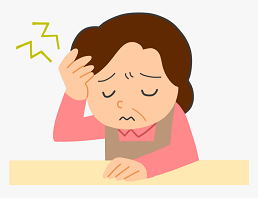Headaches have become increasingly common due to our hectic lifestyles, stress, and constant competition, which place a heavy burden on our minds. To address this issue, let's explore it in detail.
A headache is defined as pain originating from any part of the brain or upper neck. It may occur spontaneously or be triggered by various activities. The discomfort results from interactions between nerves, blood vessels, and the brain. Interestingly, the brain itself cannot feel pain; instead, it processes pain signals from other areas of the body. Most headaches occur in the muscles, blood vessels, and nerves surrounding the head and neck.
Types of Headaches:
Headaches generally fall into two main categories:
Primary Headaches: These are not linked to any underlying medical condition and include migraines, cluster headaches, tension headaches, and new daily persistent headaches (NDPH).
Secondary Headaches: These result from medical conditions such as high blood pressure, medication overuse, brain blood vessel diseases, sinus congestion, tumors, and more.
Symptoms of Headaches:
Pain in any part of the head, often throbbing or irritating.
Sensitivity to light or sound.
Neck or shoulder pain.
Ringing in the ears.
Vomiting.
Nausea.
Dizziness.
Vertigo.
Scalp tenderness.
In severe cases, symptoms may indicate a stroke.
A sensation of tightness in the head.
If you experience frequent or intense headaches, it is essential to consult a doctor. In some cases, medical tests may be necessary to rule out serious underlying causes.
Common Causes of Headaches:
Stress.
Sleep disturbances or lack of sleep.
Alcohol.
Certain foods, such as processed meats contain nitrates.
Poor posture.
Eyesight problems.
Skipped meals.
Dehydration.
Ear infection.
High blood pressure.
Influenza.
Hangovers.
Blood clots in the brain.
Acute sinusitis.
Carbon monoxide poisoning.
Brain aneurysms and encephalitis.
Preventive Measures:
Manage stress effectively.
Reduce eye strain.
Avoid strong odors and fumes that trigger headaches.
Limit alcohol intake.
Maintain a consistent sleep routine.
Engage in regular exercise.
Be mindful of your posture, especially during sports.
Avoid certain trigger foods, such as artificial sweeteners and red wine.
Practice relaxation techniques for mental well-being.
Be aware of the potential side effects of medications.
Difference Between Headaches and Migraines:
People often confuse migraines with headaches. However, migraines are typically characterized by intense, throbbing pain on one side of the head, which worsens with even slight physical exertion. In contrast, headaches usually cause a dull, tight sensation that is distracting but not debilitating.
Tips to Manage Headaches:
Rest in a quiet, dimly lit room.
Gently massage your head.
Drink coffee or tea in moderation.
Apply a hot or cold compress to affected areas.
Yoga Poses to Relieve Headaches:
Practicing yoga can help alleviate headaches. Some effective poses include:
- Adho Mukha Svanasana (Downward-Facing Dog)
- Shishuasana (Child's Pose)
- Janusirsasana (Head-to-Knee Forward Bend)
- Sarvangasana (Shoulder Stand)
By understanding headaches, their causes, and ways to manage them, you can take proactive steps toward relief and prevention.
|

